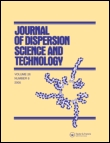
JOURNAL OF DISPERSION SCIENCE AND TECHNOLOGY
Scope & Guideline
Innovating insights in polymers, coatings, and beyond.
Introduction
Aims and Scopes
- Nanoparticle and Nanocomposite Research:
The journal frequently publishes studies on the synthesis, characterization, and application of nanoparticles and nanocomposites, focusing on their roles in catalysis, drug delivery, and environmental remediation. - Surfactant Chemistry and Applications:
Research on surfactants, including their synthesis, properties, and applications, is a core area of focus. This includes the study of amphiphilic molecules and their role in stabilizing emulsions and foams. - Emulsion Technology:
Emulsion formation, stability, and applications are central themes. The journal highlights advancements in both oil-in-water and water-in-oil emulsions, including their use in pharmaceuticals and food technology. - Environmental Applications:
Papers addressing the use of dispersions and nanomaterials for environmental remediation, particularly in the removal of pollutants and heavy metals from wastewater, are prominently featured. - Rheology and Fluid Dynamics:
The journal includes research on the rheological properties of dispersions and their implications for industrial applications, including enhanced oil recovery and drilling fluids. - Computational and Theoretical Studies:
Studies that employ computational methods to understand the behavior of dispersions, such as molecular dynamics simulations and thermodynamic modeling, are also included.
Trending and Emerging
- Green Chemistry and Sustainable Practices:
There is an increasing emphasis on environmentally friendly synthesis methods and the use of renewable resources, particularly in the production of surfactants and nanomaterials. - Smart Materials and Functional Nanocomposites:
Research on smart materials, particularly those that respond to external stimuli (e.g., pH, temperature), is gaining traction, showcasing their potential in drug delivery and environmental applications. - Nanotechnology in Medicine:
The application of nanotechnology for drug delivery systems, including nanoemulsions and nanocarriers, is increasingly prominent, reflecting a growing interest in improving therapeutic efficacy and targeting. - Wastewater Treatment Technologies:
Innovative methods for treating wastewater using dispersions, including the utilization of bio-based materials and advanced nanocomposites, are becoming a significant area of research. - Interfacial and Colloidal Science:
Studies focused on the interfacial properties of dispersions, including their stability and interactions, are trending, emphasizing the importance of understanding these mechanisms in various applications.
Declining or Waning
- Traditional Separation Techniques:
Research on classical separation methods such as sedimentation and filtration has decreased, likely due to the rise of advanced nanomaterials and innovative separation techniques that offer more efficient solutions. - Conventional Emulsifiers:
There has been a noticeable decline in studies focusing on traditional emulsifiers, as newer, more effective surfactants and biopolymer-based systems gain traction in the field. - Chemical Synthesis of Surfactants:
The volume of research dedicated to the chemical synthesis of conventional surfactants appears to be diminishing, possibly overshadowed by the growing interest in green chemistry and bio-surfactants. - Basic Textile Applications:
Research papers focusing on the application of dispersions in basic textile processes have become less frequent, indicating a shift towards more complex applications such as functional textiles and smart materials.
Similar Journals
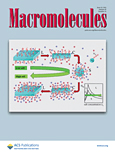
MACROMOLECULES
Unveiling the Secrets of MacromoleculesMACROMOLECULES, published by the American Chemical Society, is a premier journal in the fields of inorganic chemistry, materials chemistry, organic chemistry, and polymers and plastics. Since its inception in 1968, this influential journal has established itself as a vital resource for researchers, professionals, and students, showcasing cutting-edge research and advancements in the study of macromolecules and high-performance polymers. With a distinguished impact factor and consistently ranking in the top quartiles (Q1) across its relevant categories, MACROMOLECULES is recognized for its high-quality publications that contribute significantly to the scientific community. The journal is accessible in both print and electronic formats, facilitating rapid dissemination of knowledge. By providing a platform for innovative studies and groundbreaking discoveries, MACROMOLECULES continues to play a crucial role in shaping the future of materials science and polymer research.

Nano Express
Catalyzing global dialogue in nanotechnology.Nano Express is an esteemed open-access journal published by IOP Publishing Ltd, dedicated to advancing research in the fields of nanotechnology and materials science. Since its launch in 2020, the journal has swiftly established itself as a vital resource for researchers and professionals, garnering significant recognition in various domains, including biomaterials, electronic, optical and magnetic materials, and polymers and plastics. With a commendable categorization in Scopus quartiles, it ranks in Q2 for Electronic, Optical and Magnetic Materials, and maintains a top percentile in several others, exemplifying its commitment to high-quality research dissemination. Located in the United Kingdom, this journal fosters a global dialogue among experts and newcomers alike, facilitating open access to innovative research that drives the future of nanotechnology. By offering a platform for groundbreaking studies and reviews, Nano Express aims to bridge the gap between theoretical understanding and practical application, championing the development of next-generation materials that have the potential to transform various industries.

Emergent Materials
Connecting Science and Sustainability through Innovative Research.Emergent Materials is a leading journal in the fields of biomaterials, ceramics, composites, and environmental science, published by SpringerNature. With an ISSN of 2522-5731 and an E-ISSN of 2522-574X, this journal serves as a crucial platform for researchers and professionals seeking to publish their findings on innovative materials that drive advancements across various applications. Renowned for its impactful contributions, Emergent Materials currently holds a Q2 ranking in Biomaterials and Waste Management, and a prestigious Q1 ranking in Ceramics and Composites for 2023, showcasing its excellence in these dynamic fields. Positioned within Switzerland, the journal supports a wide array of open access research initiatives, allowing for greater dissemination and accessibility of critical scientific knowledge. Spanning over the years 2018 to 2024, the journal aims to publish groundbreaking studies that address global challenges in sustainability, energy, and material disposal. With an impressive Scopus ranking highlighting its impactful presence, generate compelling insights and stay at the forefront of material sciences with Emergent Materials.

ACS Materials Letters
Transforming Ideas into Impactful InnovationsACS Materials Letters is an esteemed peer-reviewed journal published by the American Chemical Society, emphasizing groundbreaking research and advancements in the fields of materials science, biomedical engineering, and chemical engineering. With a robust update and established reputation since its inception in 2019, this journal has rapidly ascended to the top tiers, achieving Q1 rankings in key categories such as Biomedical Engineering, Chemical Engineering (miscellaneous), and Materials Science (miscellaneous) in 2023. The journal boasts impressive Scopus rankings, including #14 in General Chemical Engineering and #19 in Biomedical Engineering, placing it among the elite publications in these domains. While not fully open access, ACS Materials Letters facilitates the dissemination of high-impact research accessible to academics and industry professionals alike. With its comprehensive scope and rigorous selection process, the journal serves as a vital resource for researchers and students eager to stay abreast of the latest innovations and technologies shaping materials science and engineering.

ACS Macro Letters
Pioneering Insights in Inorganic and Materials ChemistryACS Macro Letters, published by the American Chemical Society, is a leading journal in the fields of Inorganic Chemistry, Materials Chemistry, Organic Chemistry, and Polymers and Plastics. Established in 2012, this journal has swiftly ascended to the forefront of chemical research with an impressive reputation, as evidenced by its 2023 Scopus rankings placing it in the first quartile across multiple categories. The journal's objective is to disseminate timely and concise articles that advance the study of macromolecules and their applications, making it an essential resource for researchers, professionals, and students alike. With a focus on fostering innovation and facilitating collaboration within the chemical community, ACS Macro Letters presents a robust platform for scientists to share their groundbreaking findings. Being based in the United States, it serves as a central hub for global discourse in the chemical sciences, although it does not currently offer Open Access options. The journal's commitment to high-quality content is further underscored by its prestigious impact factor and acceptance into elite academic quartiles, signifying its influence and importance in shaping future research.

Inorganic and Nano-Metal Chemistry
Pioneering Research in Inorganic Chemistry for a Sustainable Future.Inorganic and Nano-Metal Chemistry is a premier journal published by Taylor & Francis Inc, focusing on innovative research and advancements in the fields of inorganic chemistry and nano-metal applications. With an increasing impact in the academic community, this journal has established itself within the Q3 category of both Inorganic Chemistry and Physical and Theoretical Chemistry as of 2023, reflecting its global recognition and influence. The journal is accessible as an Open Access publication, ensuring that research findings are freely available to a broad audience, promoting transparency and collaboration in scientific exploration. Based in the United Kingdom, Inorganic and Nano-Metal Chemistry aims to disseminate high-quality peer-reviewed articles that not only highlight fundamental studies but also push the boundaries of technological applications in areas such as catalysis, materials science, and nanotechnology. Researchers, professionals, and students will find this journal an invaluable resource for the latest developments and interdisciplinary insights in the ever-evolving landscape of inorganic and nano-metal chemistry.
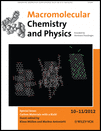
MACROMOLECULAR CHEMISTRY AND PHYSICS
Exploring Innovations in Chemistry and PhysicsMACROMOLECULAR CHEMISTRY AND PHYSICS, published by WILEY-V C H VERLAG GMBH, is a prominent journal dedicated to advancing the fields of condensed matter physics, materials chemistry, organic chemistry, physical and theoretical chemistry, and polymers and plastics. With an impressive H-index and a Q2 ranking in various relevant categories for 2023, this journal serves as a crucial platform for researchers and professionals to publish their innovative findings and theoretical advancements from 1994 to 2024. The journal's commitment to high-quality research is reflected in its Scopus rankings, which highlight its significant impact within the scientific community. Although it does not currently offer open access, it remains an essential resource for those seeking to explore the intricacies of macromolecular science. With a growing global audience, MACROMOLECULAR CHEMISTRY AND PHYSICS continues to shape the future of materials and polymer research, making it a must-read for students, researchers, and industry professionals alike.

JOURNAL OF POLYMER SCIENCE
Catalyzing Knowledge Transfer in Polymer Science and ApplicationsJOURNAL OF POLYMER SCIENCE, published by WILEY, is a premier, open-access journal dedicated to advancing the field of polymer science and its applications. With an ISSN of 2642-4150, it offers a platform for high-quality research and innovative ideas, contributing significantly to the understanding of polymaterials and their functionalities. The journal is recognized for its exceptional impact within various categories, consistently achieving Q1 rankings in Materials Chemistry, Physical and Theoretical Chemistry, and Polymers and Plastics, demonstrating its influential presence in the academic community. As of 2023, it holds a distinguished position in Scopus rankings, underscoring its relevance and rigorous peer-review process. By facilitating open access to vital research findings, the JOURNAL OF POLYMER SCIENCE plays a crucial role in fostering collaboration and knowledge transfer among researchers, professionals, and students, paving the way for innovative developments in polymer applications and materials science.
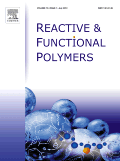
REACTIVE & FUNCTIONAL POLYMERS
Connecting Scientists to Transform Polymer ScienceREACTIVE & FUNCTIONAL POLYMERS, published by Elsevier, is a leading journal in the field of polymer science, focusing on the innovative development and application of reactive and functional polymers. With an impressive impact demonstrated through its classification in various prestigious categories, including Q1 rankings in Chemical Engineering, Chemistry, and Materials Chemistry, this journal serves as an essential resource for researchers and professionals seeking to explore the latest advances in polymer research. With a broad scope that encompasses topics from biochemistry to environmental chemistry, and a convergence of significant findings from 1995 to 2024, REACTIVE & FUNCTIONAL POLYMERS fosters academic dialogue and collaboration among scientists. The journal also features Open Access options, ensuring that groundbreaking research is readily available to a global audience. By consistently publishing high-quality articles, it not only enriches the scientific community but also drives innovation across various industries reliant on polymer technologies.
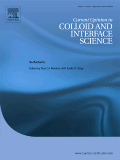
CURRENT OPINION IN COLLOID & INTERFACE SCIENCE
Navigating the Evolving Landscape of Interface ScienceCURRENT OPINION IN COLLOID & INTERFACE SCIENCE, published by Elsevier Science London, serves as a premier platform for researchers and professionals in the field of colloid, interface science, and related disciplines. With an impressive Q1 ranking in multiple categories including Colloid and Surface Chemistry, Physical and Theoretical Chemistry, Polymers and Plastics, as well as Surfaces and Interfaces, this journal showcases cutting-edge developments and expert opinions that drive innovation in these areas. As a leader in its field, it maintains robust academic standards, reflected in its high percentile rankings across various Scopus categories, such as 3rd in Surfaces and Interfaces and 10th in Physical and Theoretical Chemistry. While the journal is not Open Access, it provides valuable insights to a wide audience, making it an essential resource for advancing knowledge and fostering collaborations among researchers, academics, and industry professionals alike. With a continual publication timeline extending from 1996 to 2024, it captures the evolving landscape of colloid and interface science, ensuring that readers are equipped with the latest findings and perspectives.